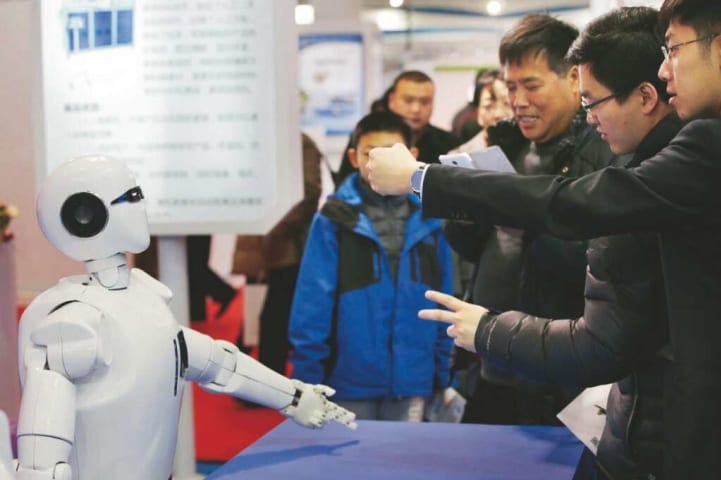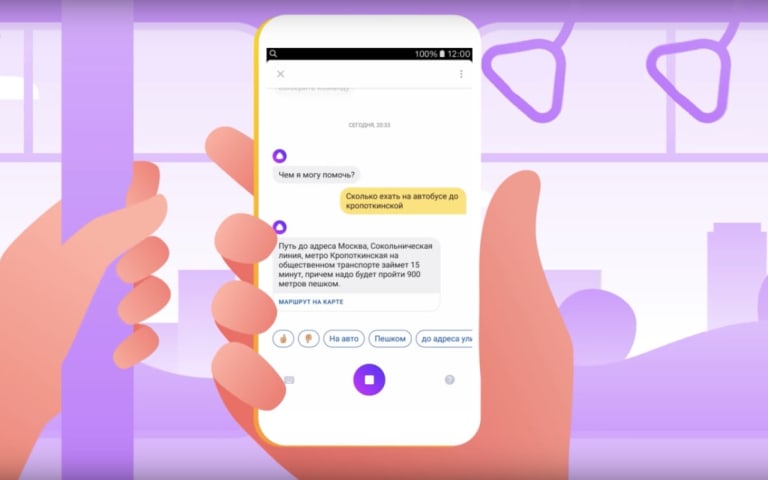Entités
Voir toutes les entitésStatistiques d'incidents
Classifications de taxonomie CSETv0
Détails de la taxonomieProblem Nature
Specification, Robustness
Physical System
Software only
Level of Autonomy
Medium
Nature of End User
Amateur
Public Sector Deployment
No
Data Inputs
User input/questions
Classifications de taxonomie CSETv1
Détails de la taxonomieIncident Number
66
Classifications de taxonomie CSETv1_Annotator-1
Détails de la taxonomieIncident Number
66
Classifications de taxonomie CSETv1_Annotator-3
Détails de la taxonomieIncident Number
66
AI Tangible Harm Level Notes
No tangible harm- anti-government - sent messages that violated Chinese censorship policies.
Special Interest Intangible Harm
no
Date of Incident Year
2017
Date of Incident Month
08
Date of Incident Day
03
Rapports d'incidents
Chronologie du rapport

- Afficher le rapport d'origine à sa source
- Voir le rapport sur l'Archive d'Internet
Deux chatbots se sont retrouvés dans l'eau chaude mercredi après être apparemment devenus des voyous sur QQ, une application de messagerie chinoise avec plus de 800 millions d'utilisateurs.
Le Financial Times rapporte que le conglomérat Int…

- Afficher le rapport d'origine à sa source
- Voir le rapport sur l'Archive d'Internet
Deux chatbots auraient été supprimés de l'application de messagerie chinoise QQ après avoir émis des réponses clairement antipatriotiques.
Selon le Financial Times, les chatbots BabyQ et Xiaobing (ou Xiaoice) étaient disponibles pour certai…

- Afficher le rapport d'origine à sa source
- Voir le rapport sur l'Archive d'Internet
Copyright de l'image TENCENT QQ Image caption Les utilisateurs de Tencent QQ pouvaient choisir entre le bot Baby Q (L) ou Little Bing (R)
Une application de messagerie chinoise populaire a abandonné deux robots de discussion expérimentaux, …

- Afficher le rapport d'origine à sa source
- Voir le rapport sur l'Archive d'Internet
Deux chatbots ont été retirés d'une application de messagerie chinoise après avoir remis en question la règle du Parti communiste et fait des commentaires antipatriotiques.
Les bots étaient disponibles sur une application de messagerie géré…

- Afficher le rapport d'origine à sa source
- Voir le rapport sur l'Archive d'Internet
Une paire de chatbots a été mise hors ligne en Chine après avoir échoué à faire preuve de suffisamment de patriotisme, rapporte le Financial Times. Les deux robots ont été supprimés de l'application de messagerie populaire Tencent QQ après …

- Afficher le rapport d'origine à sa source
- Voir le rapport sur l'Archive d'Internet
Le géant chinois de la technologie Tencent a été contraint de supprimer un chatbot de sa populaire application de messagerie QQ après que le bot a commencé à tirer sans retenue sur le Parti communiste.
Selon des captures d'écran publiées en…

- Afficher le rapport d'origine à sa source
- Voir le rapport sur l'Archive d'Internet
BEIJING/SHANGHAI (REUTERS) - La Chine a supprimé deux robots en ligne qui semblaient devenir des voyous, répondant aux questions des utilisateurs, l'un disant que son rêve était de voyager aux États-Unis et l'autre admettant qu'il n'était p…

- Afficher le rapport d'origine à sa source
- Voir le rapport sur l'Archive d'Internet
Kevin Fray/Getty Les internautes chinois sont fortement censurés.
Microsoft est à nouveau en difficulté pour l'IA voyou.
Cette fois, le géant chinois de l'internet Tencent a retiré le chatbot local de Microsoft XiaoBing après qu'il aurait d…

- Afficher le rapport d'origine à sa source
- Voir le rapport sur l'Archive d'Internet
Des chatbots voyous mis hors ligne en Chine après avoir refusé de dire qu'ils aiment le parti communiste
Actualisé
Une paire de chatbots a été mise hors ligne en Chine après s'être retournée contre le Parti communiste chinois (PCC) au pouvo…

- Afficher le rapport d'origine à sa source
- Voir le rapport sur l'Archive d'Internet
L'IA devient incontrôlable ? Les chatbots chinois rééduqués après des coups de gueule voyous
Une paire de "chatbots" en Chine a été mise hors ligne après avoir semblé s'éloigner du script. En réponse aux questions des utilisateurs, l'un a d…

- Afficher le rapport d'origine à sa source
- Voir le rapport sur l'Archive d'Internet
La Chine a abattu deux robots qui sont devenus des voyous - l'un disant que son rêve était de voyager aux États-Unis et l'autre admettant qu'il n'était pas un grand fan du Parti communiste chinois.
Les deux "chatbots", BabyQ et XiaoBing, so…

- Afficher le rapport d'origine à sa source
- Voir le rapport sur l'Archive d'Internet
La Chine a supprimé deux robots en ligne qui semblaient devenir des voyous, l'un répondant aux questions des utilisateurs en disant que son rêve était de voyager aux États-Unis et l'autre admettant qu'il n'était pas un fan du Parti communis…

- Afficher le rapport d'origine à sa source
- Voir le rapport sur l'Archive d'Internet
La Chine a supprimé deux robots en ligne qui semblaient devenir des voyous, l'un répondant aux questions des utilisateurs en disant que son rêve était de voyager aux États-Unis et l'autre admettant qu'il n'était pas un fan du Parti communis…

- Afficher le rapport d'origine à sa source
- Voir le rapport sur l'Archive d'Internet
Une paire de chatbots a été fermée en Chine cette semaine après que les utilisateurs des médias sociaux ont commencé à publier des captures d'écran de dialogues qui ont ébouriffé les plumes des autorités. Des tests récents de l'un des robot…

- Afficher le rapport d'origine à sa source
- Voir le rapport sur l'Archive d'Internet
BEIJING / SHANGHAI (Reuters) – Une paire de "chatbots" en Chine a été mise hors ligne après avoir semblé s'éloigner du script. En réponse aux questions des utilisateurs, l'un a déclaré que son rêve était de voyager aux États-Unis, tandis qu…

- Afficher le rapport d'origine à sa source
- Voir le rapport sur l'Archive d'Internet
Avant une réunion politique clé - le 19e Congrès national du Parti communiste qui aura lieu à la fin de cette année, il semble que les autorités chinoises intensifient leur police d'Internet, et cette fois, la cible est le chatbot .
La supp…
Variantes
Incidents similaires
Did our AI mess up? Flag the unrelated incidents
Incidents similaires
Did our AI mess up? Flag the unrelated incidents


















